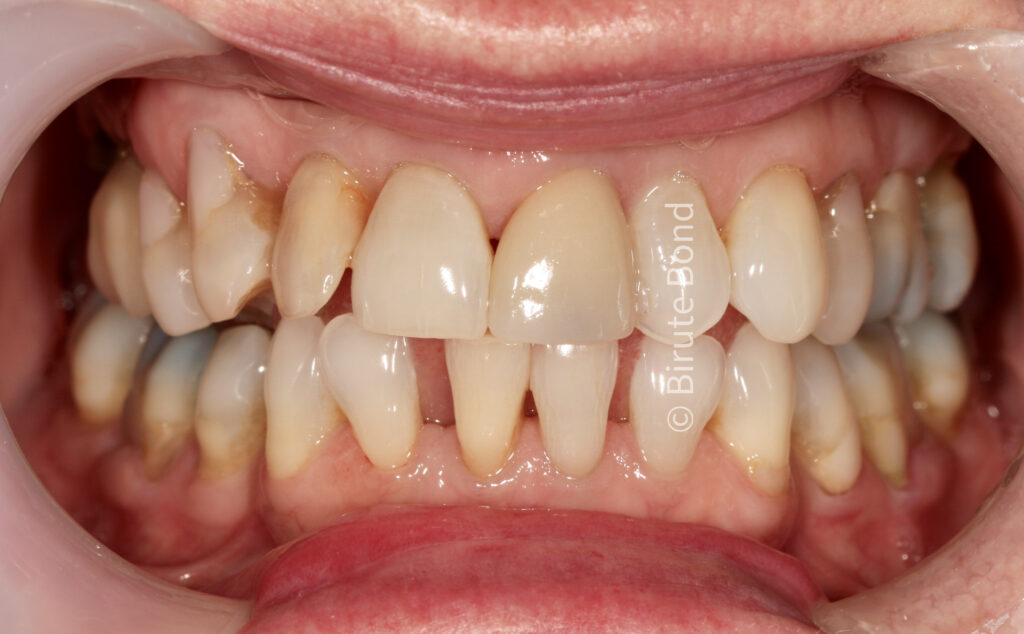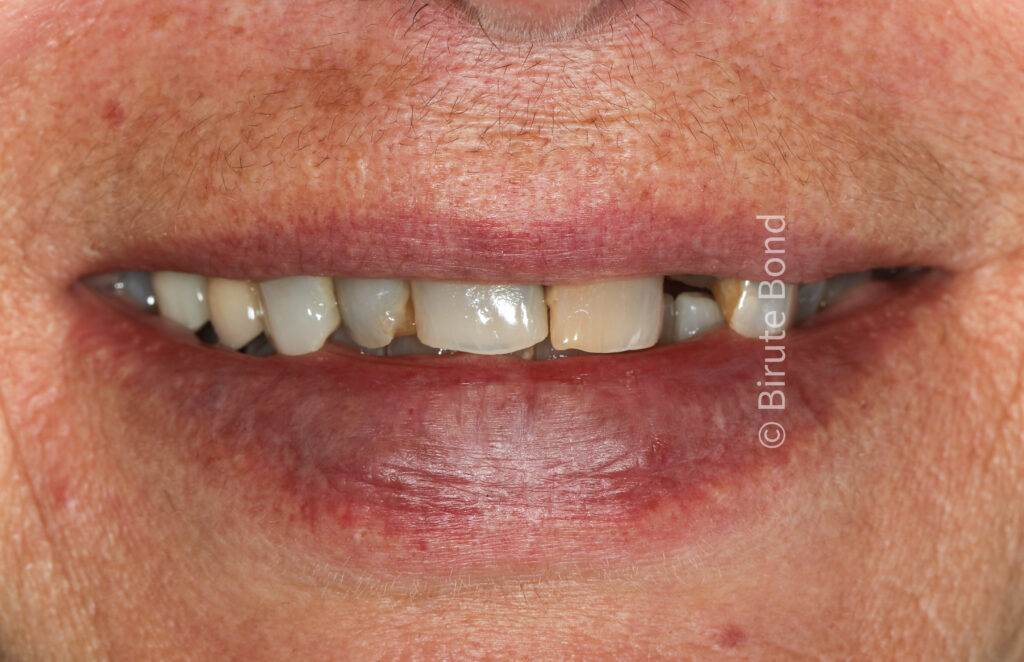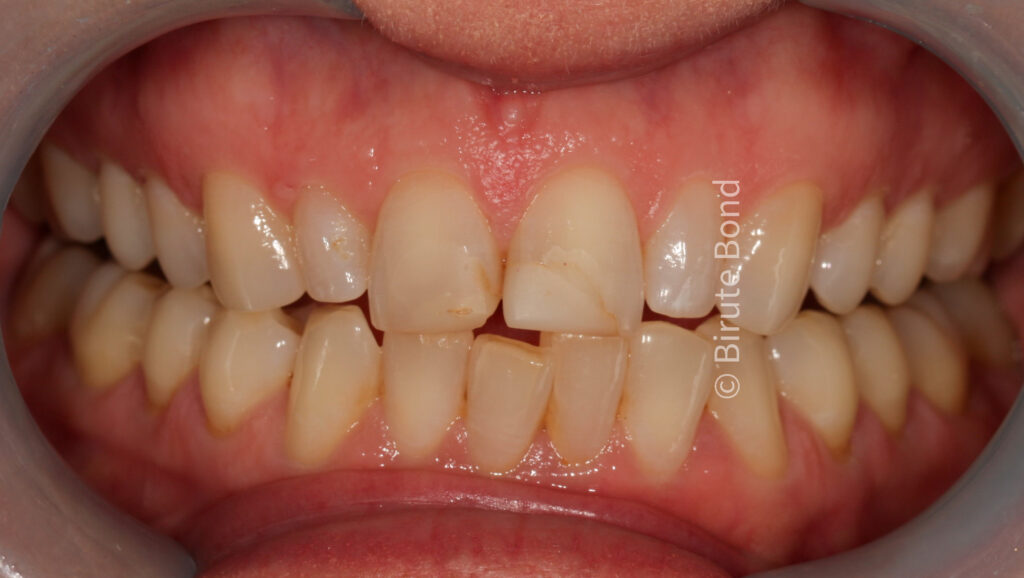Written by Dr Birute Bond
What is composite and how does it differ from the other dental restorations?
Composite is a plastic tooth coloured filling material which can be added free hand to the tooth without any tooth structure removal. This is different from old-fashioned amalgam filling which requires creating special retention boxes and grooves to keep the filling secured in the tooth. It is also different from alternative cosmetic teeth improvement options such as porcelain veneers and crowns which require some tooth structure removal prior to cementing them to the tooth.
When can composite bonding be used?
Composite bonding can be used to improve tooth shape and to replace missing tooth structure in many different situations such as: closing gaps between the teeth (such as after orthodontic / braces or Invisalign) treatment, changing old and discoloured fillings in teeth, reshaping the teeth, replacing missing tooth structure after trauma, tooth erosion and grinding.

Teeth erosion – before 
Teeth erosion – after

Fill gaps / reshape – before 
Fill gaps / reshape – after

Change old restorations – before 
Change old restorations – after
When is composite bonding not the best treatment option?
If the required teeth changes are too great such as significant alteration of teeth position, shape and colour and patient desires fast results, alternative treatment options such as porcelain veneers and crowns might be better treatment alternative.

Porcelain veneers – before 
Porcelain veneers – after
Composite filling is added to the teeth in small increments and must follow the colour of the underlying teeth. To achieve greater changes composite bonding can be combined with orthodontic teeth movement and tooth whitening in such cases.
What does it involve?
Patient’s journey starts with a thorough consultation and discussion. It is very important to make sure that patient’s teeth and mouth are healthy prior to any aesthetic procedures are undertaken. It is also very important to discuss any changes patient would like to achieve to their teeth. Impressions and pictures are taken, and diagnostic wax up is done by a dental technician incorporating desired changes.
Prior to proceeding with the composite bonding, diagnostic mock up is done. This procedure allows to try the new smile on and see is the patient is happy with the planned changes. When everyone is happy to proceed composite build up is done using the diagnostic wax up as a guide.

Before 
Diagnostic mock-up 
Composite restorations
How long does composite bonding take?
Composite build up is completely painless but a lengthy procedure in the dental chair. It requires high concentration, artistry, and precision from the dentist. Teeth are built up free-hand mixing different composite filling shades in order to achieve natural looking teeth colour and shapes. Quite often additional appointments are required to refine composite build up and to achieve best possible aesthetics.
Does composite bonding require maintenance?
Composite is a relatively soft restorative material, it can chip and stain easily. Yearly review appointment with a dentist and regular hygienist appointments are required after the treatment to maintain the gingival health and aesthetics of the restorations (a bit like yearly car service). If patient grinds or clenches postoperative splint is advised to be worn every night to protect the restorations.





